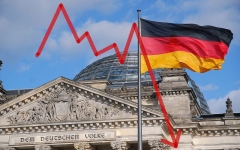Danish inflation hits 40-year high
Inflation in Denmark has climbed to its highest in nearly four decades, as food and energy prices keep rising amid a deepening energy crisis across the European Union.
Last month, Denmark’s consumer price index saw a year-on-year surge of 8.9%, the fastest pace since early 1983, according to data revealed on Monday by Copenhagen-based Statistics Denmark. This figure is up from 8.7%, recorded in July.
Current prices are expected to increase annual spending on consumer goods for an average Danish household by an extra 40,000 kroner ($5,400) compared to 2021, according to Mathias Dollerup Sproegel, a senior economist at Sydbank, as cited by Bloomberg.
“Inflation is the Achilles’ heel in both the Danish and the European economy,” Sproegel said.
The core inflation rate, excluding the effects of energy concerns, grew to 6% in August from 5.5% the previous month.
In late August, the country’s authorities cut the economic growth forecast for both the current year and the next, due to the rampant inflation that keeps eating away purchasing power and eroding the labor market.
According to the latest outlook issued by Denmark’s finance ministry, GDP will expand by only 2.8% in 2022, down from a May forecast of 3.4%. Next year, the economy is expected to grow 0.8%, down from a projection of 1.9%.
Meanwhile, the inflation rate is forecast to surge 7.3% on average this year and then slow to 3.3% in 2023.
“Inflation is causing a fragile situation, and we can easily see a further increase,” Jeppe Juul Borre, chief economist at Arbejdernes Landsbank, told the news agency. “That’s frightening at an uncertain time when we’re also heading for colder weather.”

Comments to this:








